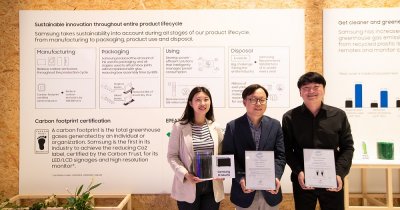According to AZO Cleantech, researchers at FSU published a paper in Physical Biology, after they observed the development of brown spots on bananas that appear during a two-day window and rapidly expand, but then suddenly stop for a while, meaning that in between the brown spots the peel is still yellow.
Oliver Steinbock, a professor in the Department of Chemistry and Biochemistry at FSU and the paper's lead author, said that "you can look at some fairly old bananas, and you will see these brown spots but with dark yellow regions in between."
"They never really invaded those regions. They just stopped. That is scientifically interesting because it might tell you something about the mechanism that causes the browning", he added.
Brown spots appear on bananas whenever oxygen reacts with the enzyme of the fruit's peel, a reaction which causes the apparition of these brown spots. The team of researchers wanted to understand how these pigments appear and how they spread, and also why in this dot formation.
By using time-lapse videos, the scientists were able to determine how often these brown spots were formed and how quickly they spread over the course of a week.
Then they used the information in order to develop a model that describes the reaction's speed and the pattern that follows.
Previous research showed that browning happened through the tiny pores on the banana peel, called stomata, that allow for oxygen to enter, but the thing is that banana peels contain way more of these pores than brown spots.
The reason behind this might be because oxygen can only enter through specific, defective pores, and whenever this happens, the peel is able to quickly respond, which means that the process of browning cannot advance beyond the initial pores that allowed for the browning to begin.
This might happen, as scientists believe, due to the fact that the defective stomata collapses, which basically "traps" brown spots in those specific area, creating the sharp contrast between them and the yellow color of the peel.
According to Steinbock, "that's the picture we developed based on our model and our measurements. But what exactly does it take for this to happen? Is it a rogue pore that misbehaves? Is it a little cluster of stomata? That is a difficult question to answer at the moment."
Being one of the most popular fruits in the world, the International Institute for Sustainable Development stated that farmers cultivated about 117 million tons of bananas back in 2019, but nearly 50 million tons ended up as waste.
This is due to visually unappealing bananas that have brown spots on them, and instead of turning them into banana bread or storing them in a freezer, consumers either don't pick them up at the supermarket or straight up throw them away when they get home.
This is why researchers try to understand the browning process in order to potentially stop or delay it for as much as possible to avoid million tons of otherwise good fruit being thrown away just because it lost part of its aesthetics.
"It's really a very tricky business because bananas are very complicated systems. If you cool them, you slow down the browning, but you mess with the taste. You can spray something onto the surface to reduce the gas exchange, but that will indirectly change the taste. It's not an easy problem", Steinbock concluded.
 Mihai - Cristian Ioniță
Mihai - Cristian Ioniță












Any thoughts?